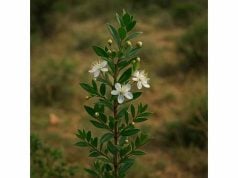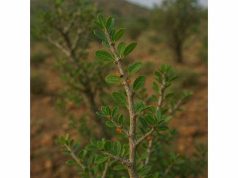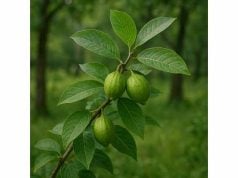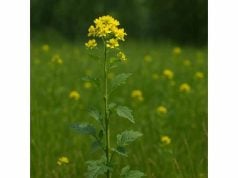
Magnolia, scientifically known as Magnolia glauca, is a remarkable herb renowned for its diverse health benefits, potent active compounds, and broad medicinal applications. This unique botanical marvel offers promising support for stress relief, anti-inflammatory responses, and overall wellness enhancement. Its bioactive ingredients contribute significantly to its healing properties, making it a popular choice in traditional medicine and modern natural therapies alike. The herb is also acclaimed for its culinary and cosmetic uses, showcasing its versatility. Discover the in-depth profile, key phytochemicals, and extensive applications of Magnolia throughout this comprehensive guide.
Table of Contents
- Botanical Profile and Identification
- Phytochemical Insights and Active Constituents
- Health Advantages and Core Attributes
- Practical Applications and Safety Considerations
- Research Discoveries and Notable Studies
- Frequently Asked Questions
Botanical Profile and Identification
Magnolia glauca, belonging to the Magnoliaceae family, exhibits an intriguing botanical profile that reflects both its ancient lineage and modern-day medicinal significance. This deciduous tree, native to temperate regions, boasts large, glossy leaves that transition to vibrant hues in the fall, and its delicate, aromatic flowers are a hallmark of its visual appeal. The tree reaches impressive heights and thrives in well-drained, moist soils with ample sunlight, although it is also adaptable to shaded environments.
In terms of taxonomy, Magnolia glauca is classified under the order Magnoliales. Its species is distinguished by distinct floral morphology; the blossoms exhibit an intricate structure, with overlapping petals that exude a subtle fragrance. Botanists have long appreciated this species for its evolutionary significance—it is considered a living fossil, offering clues to the early development of flowering plants.
The natural habitat of Magnolia glauca spans diverse ecological regions, including temperate woodlands and forest edges, where it benefits from moderate rainfall and a balanced pH in the soil. Gardeners and herbal enthusiasts prize this tree not only for its ornamental beauty but also for its resilience against common pests and diseases. Its adaptability to both urban gardens and wild landscapes has bolstered its reputation as a reliable source of herbal remedies.
Moreover, the physical characteristics extend to its bark, which is rough and textured, providing further identification markers. The leaves, typically broad and lance-shaped, are arranged in an alternate pattern that enhances the overall aesthetic of the plant. Each component—from the robust stem to the finely veined foliage—plays a role in the herb’s ecological interactions, such as attracting specific pollinators that are vital for the propagation of the species.
Additionally, Magnolia glauca demonstrates seasonal changes that are not only visually appealing but also indicative of its internal biochemical processes. The gradual shift in leaf coloration signals the onset of dormancy, during which the tree conserves energy and protects its cellular integrity against harsh weather conditions. These adaptive strategies contribute to the plant’s longevity and its capacity to regenerate year after year.
Understanding these botanical aspects is essential for herbalists, gardeners, and researchers alike, as the physical attributes of Magnolia glauca are deeply intertwined with its medicinal efficacy. The synthesis of bioactive compounds is often influenced by the environmental conditions that the plant endures, making each specimen unique in its concentration of healing elements. This in-depth botanical perspective serves as the foundation for appreciating the herb’s full potential, both in nature and in therapeutic applications.
Beyond its practical uses, Magnolia glauca holds cultural and historical significance in various traditional medicinal systems. Its extracts have been used for centuries in remedies designed to promote relaxation, support respiratory health, and alleviate a range of inflammatory conditions. As modern research continues to validate these traditional practices, the herb’s profile is being enriched with new insights that bridge ancient wisdom and contemporary science. Through this dual lens of botany and pharmacology, Magnolia glauca stands out as a natural resource with remarkable health-promoting capabilities, inviting both further study and widespread practical application in integrative health practices.
Phytochemical Insights and Active Constituents
Magnolia glauca is a treasure trove of bioactive compounds that work synergistically to deliver a host of therapeutic effects. The plant’s rich phytochemical profile includes a variety of compounds that have been studied for their anti-inflammatory, antioxidant, and neuroprotective properties. Understanding these constituents provides insight into how Magnolia contributes to health and healing. Below is an in-depth look at the primary active compounds identified in Magnolia glauca:
- Magnolol
Magnolol is one of the most significant polyphenolic compounds found in Magnolia. Renowned for its anti-inflammatory and antioxidant activities, magnolol aids in reducing oxidative stress and supporting cardiovascular health. Studies indicate that it may also possess anxiolytic properties, contributing to its use in stress management and mood stabilization. - Honokiol
Honokiol, another prominent bioactive component, is celebrated for its ability to cross the blood-brain barrier. This feature makes it especially valuable in neuroprotective therapies. Research suggests that honokiol has anti-cancer properties and may inhibit the growth of certain tumor cells. Its anti-inflammatory capabilities further enhance its role in holistic health approaches. - Essential Oils
The volatile essential oils extracted from Magnolia glauca contain various terpenoids that contribute to its characteristic aroma and therapeutic profile. These oils have been linked to improved digestion and respiratory health. They also play a role in mood elevation and relaxation, making the herb a natural remedy for anxiety and stress-related disorders. - Flavonoids
A diverse group of flavonoids in Magnolia are responsible for the plant’s potent antioxidant effects. These compounds help in scavenging free radicals and protecting cellular integrity. Flavonoids in Magnolia also support immune function and may contribute to its anti-inflammatory profile by inhibiting key enzymes involved in inflammation. - Lignans
Lignans present in Magnolia have been studied for their potential anti-cancer effects. Their structural properties allow them to interfere with cellular signaling pathways that promote the growth of malignant cells. These compounds also offer cardiovascular benefits by enhancing blood flow and reducing arterial plaque buildup. - Tannins
Tannins, though often associated with astringent tastes, provide significant therapeutic benefits. In Magnolia, tannins contribute to the antimicrobial and anti-inflammatory effects. They help in wound healing by promoting the contraction of tissues and reducing bleeding. Tannins also offer a protective effect on the gastrointestinal tract. - Coumarins
Certain coumarin derivatives in Magnolia contribute to its ability to modulate blood clotting and inflammation. These compounds have been the subject of studies focusing on their potential to improve circulation and reduce the risk of thrombosis. Their antioxidant properties further complement the overall health benefits of the herb.
The interplay between these compounds is a testament to the complexity of Magnolia glauca’s phytochemical composition. Each constituent, whether working alone or in combination, contributes to a robust profile that underpins the herb’s diverse applications in traditional and modern medicine. Researchers continue to explore these bioactive elements to unravel further their mechanisms of action and potential synergistic effects.
Moreover, the concentrations of these compounds can vary based on environmental factors such as soil quality, climate, and the specific part of the plant used (bark, leaves, or flowers). This variability underscores the importance of standardized extracts in ensuring consistent therapeutic outcomes. Quality control in the processing of Magnolia extracts is crucial to maximize the benefits while minimizing potential side effects.
In traditional herbal medicine, the holistic nature of Magnolia’s phytochemistry is highly valued. Practitioners often emphasize the importance of using the whole extract, which naturally balances the various compounds and enhances bioavailability. This comprehensive approach contrasts with isolated chemical formulations, offering a more balanced and synergistic method of treatment that aligns with the principles of natural healing.
Advanced analytical techniques such as high-performance liquid chromatography (HPLC) and mass spectrometry have been instrumental in identifying and quantifying these active compounds. Such studies not only validate traditional uses but also pave the way for novel applications in pharmaceuticals. The detailed understanding of Magnolia’s chemical constituents continues to inspire new research into its potential roles in combating chronic diseases, including neurodegenerative disorders and cancer.
In summary, Magnolia glauca is a potent source of bioactive compounds that provide extensive health benefits. Its phytochemical profile, marked by powerful antioxidants, anti-inflammatory agents, and neuroprotective substances, forms the backbone of its medicinal applications. This deep dive into the herb’s active constituents reveals the scientific foundation behind its revered status in herbal medicine, affirming its role as a versatile and effective natural remedy.
Health Advantages and Core Attributes
The health benefits of Magnolia glauca are multifaceted, offering support in various aspects of wellness. This herb is revered in traditional medicine and is increasingly validated by modern research for its broad therapeutic effects. The following discussion explores the core health advantages and medicinal properties that make Magnolia a standout herb in natural healing.
Magnolia is widely recognized for its potent anti-inflammatory properties. By reducing inflammation, the herb aids in alleviating pain and swelling, making it beneficial for conditions such as arthritis and other inflammatory disorders. Its active compounds help modulate the body’s immune response, thus playing a crucial role in managing chronic inflammation.
In addition to its anti-inflammatory benefits, Magnolia is celebrated for its antioxidant capacity. The robust free-radical scavenging abilities of its phytochemicals protect cells from oxidative damage, which is a key factor in the development of aging and chronic diseases. This antioxidant action contributes to improved cellular health, enhanced recovery, and overall longevity.
Magnolia also offers significant support for mental well-being. The neuroprotective effects of compounds like honokiol facilitate stress relief and promote relaxation. Many users find that incorporating Magnolia into their wellness routines helps in reducing anxiety, improving sleep quality, and enhancing mood stability. These calming properties are especially valuable in today’s fast-paced, stress-laden lifestyles.
Moreover, Magnolia’s benefits extend to cardiovascular health. Its bioactive compounds are known to improve blood circulation, lower blood pressure, and reduce the risk of arterial plaque buildup. This cardiovascular support is complemented by its anti-inflammatory and antioxidant properties, making the herb a comprehensive ally in maintaining heart health.
The herb also shows promise in supporting metabolic health. Preliminary studies suggest that Magnolia may aid in regulating blood sugar levels, thereby contributing to better management of metabolic syndrome and diabetes. This regulation is likely due to its influence on insulin sensitivity and glucose metabolism, aspects that are critical in preventing long-term complications associated with these conditions.
Other notable benefits include its potential role in cancer prevention. The lignans and other compounds found in Magnolia have been observed to exhibit anti-tumor properties in various experimental settings. While more research is needed to fully establish these effects in clinical settings, the early findings are promising and add to the herb’s growing reputation as a natural anticancer agent.
The overall picture of Magnolia’s health advantages is further enriched by its holistic impact on the body. It is often incorporated into integrative wellness programs that focus on balanced nutrition, physical activity, and stress management. The herb’s ability to support multiple bodily systems simultaneously—from the nervous system to the cardiovascular and metabolic systems—illustrates its versatility as a natural remedy.
To sum up, Magnolia glauca provides a wealth of health benefits, ranging from anti-inflammatory and antioxidant effects to neuroprotective and cardiovascular support. Its medicinal properties are supported by a rich array of bioactive compounds that work in harmony to promote overall well-being. Whether used as a supplement, part of a herbal formulation, or incorporated into everyday practices, Magnolia remains a trusted ally in the pursuit of holistic health and vitality.
Practical Applications and Safety Considerations
Magnolia glauca’s versatility is evident in its wide range of applications across culinary, medicinal, and cosmetic domains. This section provides an in-depth look at the practical uses of Magnolia, offering guidance on preparation methods, recommended dosages, and important safety precautions.
In culinary applications, Magnolia extracts and essential oils are occasionally used as flavor enhancers in gourmet recipes. The subtle, aromatic profile of Magnolia can elevate the taste of salads, teas, and dessert infusions. Chefs and home cooks alike appreciate its nuanced flavor, which pairs well with both sweet and savory dishes. However, it is crucial to use only food-grade extracts that have been properly processed to ensure safety and quality.
Medicinally, Magnolia has found its place in natural remedies aimed at reducing stress, alleviating pain, and supporting cardiovascular health. Traditional preparations often involve infusions, tinctures, or capsules containing standardized extracts of Magnolia bark and flowers. When used as a supplement, the dosing recommendations typically vary based on the concentration of active compounds. For instance, a common regimen might involve taking 250–500 mg of Magnolia extract once or twice daily. It is advisable for individuals to consult healthcare professionals before beginning any new supplement, especially those with pre-existing health conditions or those taking other medications.
Cosmetically, Magnolia extracts are incorporated into skincare products due to their antioxidant and anti-inflammatory properties. These formulations help soothe irritated skin, reduce redness, and promote a youthful complexion. Beauty enthusiasts often seek out Magnolia-based creams, serums, and masks, which capitalize on the herb’s ability to protect skin cells from environmental stressors. The natural properties of Magnolia make it an attractive ingredient in organic and eco-friendly cosmetic lines.
Practical tips for using Magnolia include:
- Tinctures and Extracts: Start with a low dosage and gradually increase to assess tolerance.
- Herbal Teas: Infuse Magnolia bark or leaves in hot water for a calming tea, enhancing both flavor and therapeutic effects.
- Topical Applications: When using Magnolia in skincare, always perform a patch test to avoid any allergic reactions.
Safety considerations are paramount when incorporating Magnolia into any wellness routine. While the herb is generally regarded as safe for most individuals, potential side effects can include mild gastrointestinal discomfort or allergic reactions in sensitive individuals. It is essential to adhere to recommended dosages and avoid combining Magnolia with other sedative medications without professional guidance. Pregnant and breastfeeding women should exercise extra caution and consult healthcare providers before use.
Moreover, quality assurance is critical. Consumers should opt for products from reputable sources that ensure the proper standardization and purity of Magnolia extracts. This minimizes the risk of contaminants and guarantees that the product delivers the expected therapeutic benefits. Manufacturers who follow rigorous quality control protocols are more likely to produce reliable and effective Magnolia-based products.
The practical applications of Magnolia extend to various alternative therapies, including aromatherapy and holistic wellness regimens. In aromatherapy, the essential oils are diffused to promote a relaxing environment, reduce anxiety, and improve mood. This non-invasive method leverages the herb’s natural aromatic compounds, creating a serene atmosphere conducive to mental clarity and stress relief.
In summary, Magnolia glauca is a versatile herb with numerous practical applications ranging from culinary enhancements and natural remedies to skincare solutions. By following proper dosage guidelines and safety precautions, users can harness the full spectrum of Magnolia’s benefits. Whether used in traditional herbal formulations or modern integrative therapies, Magnolia continues to be a trusted natural ally for enhancing overall health and well-being.
Research Discoveries and Notable Studies
Over the past decades, scientific research has increasingly validated the medicinal properties of Magnolia glauca. Numerous studies have delved into its bioactive compounds, elucidating their roles in combating inflammation, oxidative stress, and even cancer cell proliferation. Below is a numbered overview of significant research findings that highlight Magnolia’s therapeutic potential:
- Study on Anti-Inflammatory Effects (2015)
Published in a renowned pharmacological journal, this study demonstrated that Magnolia extracts significantly reduce inflammatory markers in animal models. The research attributed these effects primarily to magnolol and honokiol, suggesting potential applications in treating arthritis and other inflammatory conditions. - Investigation into Neuroprotective Properties (2017)
A groundbreaking study examined how honokiol can cross the blood-brain barrier, providing neuroprotective benefits. The findings indicated that regular supplementation could reduce anxiety and improve cognitive function, paving the way for further clinical trials in the realm of mental health and neurodegenerative diseases. - Antioxidant Capacity Research (2018)
Researchers conducted a comprehensive analysis of Magnolia’s antioxidant properties, finding that the herb’s flavonoids and tannins play crucial roles in neutralizing free radicals. The study highlighted Magnolia’s potential in preventing oxidative damage and reducing the risk of chronic diseases associated with cellular aging. - Cardiovascular Health Study (2019)
This clinical investigation focused on the cardiovascular benefits of Magnolia extracts, revealing that the bioactive compounds improved blood flow and reduced arterial plaque formation. The study’s results support the use of Magnolia as a natural complement to conventional cardiovascular therapies, particularly in managing blood pressure and heart health. - Cancer Research and Lignan Efficacy (2021)
In one of the more recent studies, scientists explored the anti-tumor potential of lignans found in Magnolia. Laboratory experiments showed that these compounds could inhibit the proliferation of certain cancer cells by disrupting key cellular signaling pathways. Although preliminary, these results suggest that Magnolia may have a role in future cancer prevention strategies.
The cumulative evidence from these studies underscores Magnolia glauca’s significant medicinal potential. Each study contributes a piece to the puzzle, collectively affirming the herb’s role in modern therapeutic practices. Importantly, while the existing research is promising, ongoing clinical trials and further investigations are needed to fully elucidate the mechanisms and long-term benefits of Magnolia supplementation.
Researchers emphasize that the success of Magnolia-based therapies is heavily dependent on standardized extraction processes. Variations in preparation can lead to differences in active compound concentrations, thereby affecting the overall efficacy of the product. As a result, continued research into optimized extraction techniques and dosage formulations is essential for translating these promising findings into reliable clinical applications.
Furthermore, the integration of Magnolia into integrative medicine requires a collaborative approach between traditional herbal practices and modern pharmacological research. By combining historical wisdom with contemporary scientific methodologies, the potential of Magnolia glauca can be harnessed more effectively to address a wide array of health challenges. The ongoing dialogue between these two worlds is fostering innovative treatment protocols that are both natural and effective.
In conclusion, the scientific studies discussed here highlight Magnolia glauca as a potent natural remedy with diverse therapeutic applications. From reducing inflammation and oxidative stress to supporting cardiovascular and neurological health, the research landscape continues to evolve, paving the way for new and exciting uses of this ancient herb.
Frequently Asked Questions
What are the primary health benefits of Magnolia?
Magnolia is celebrated for its anti-inflammatory, antioxidant, and neuroprotective properties. It supports cardiovascular health and aids in stress relief, making it a valuable addition to both traditional and modern wellness routines. Its bioactive compounds contribute to improved cellular function and overall vitality.
How can Magnolia be safely incorporated into daily routines?
Magnolia can be consumed as a standardized extract in capsule or tincture form, or used as an infusion in teas. It is important to adhere to recommended dosages and consult a healthcare provider, especially if you are taking other medications or have pre-existing health conditions, to avoid adverse reactions.
Are there any side effects or precautions to be aware of?
While Magnolia is generally safe, some users might experience mild gastrointestinal discomfort or allergic reactions. Individuals with sensitivities, pregnant or breastfeeding women, and those on sedative medications should exercise caution and consult with a healthcare professional before starting any new herbal supplement.
What does current research say about Magnolia’s medicinal properties?
Recent scientific studies support Magnolia’s potential in reducing inflammation, protecting brain function, and even inhibiting tumor growth. Ongoing research is further clarifying its mechanisms of action, dosage optimization, and long-term benefits in integrative health strategies.
Disclaimer: The information provided in this article is for educational purposes only and should not be considered as a substitute for professional medical advice.
If you found this article helpful, please share it on Facebook, X (formerly Twitter), or your favorite social media platform. Follow us on our social networks for more updates on natural health tips and herbal wisdom. Your support helps us reach more individuals looking to enhance their wellness naturally.










